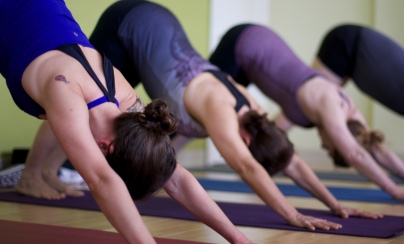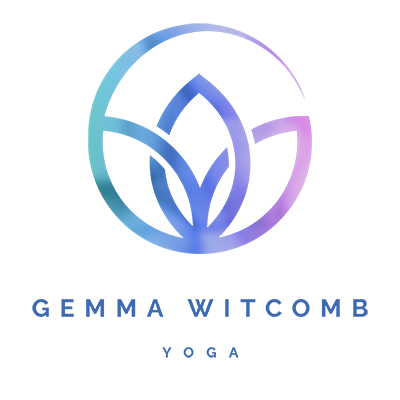
I’ve had a lot of questions recently asking me to define what yoga is and it’s a really difficult thing to do! Yoga has so many historical, religious and spiritual connotations that it would take entire texts for me to explain it in all its glory. What interests me more and more is what yoga is now, in the west, to the majority of modern yogis.
Some say that you shouldn’t practice yoga without fully studying and committing to a full yogic lifestyle and there has been a lot of criticism about the new wave of yoga ‘celebs’ wonderfully flexible and strong beautiful people with incredible Instagram images and awesome leggings!! (I have to admit to a weakness for leggings myself!) These fabulously athletic yogis hold poses unachievable for most people and this could put beginners off or conversely be inspiring, depending on your point of view.
The wonderful thing about the ever increasing interest in yoga is that there is room for it all! Those who just want to practice the physical postures, get fitter, stronger and more flexible will find teachers focused on just that, whereas if you want to study the Vedic texts and philosophy, do silent retreats and chant, well you can do that too! Its a really exciting time, where all different styles of yoga are available in cities and towns near you. I believe that what ever your reasons for starting yoga and how deeply you believe in it’s more esoteric aspects, you will find a benefit from it and if you practice long enough, the more you will want to know and experience.
Here’s my brief outline about where yoga comes from and some of the styles that are most popular
Hatha simply refers to the physical aspects of yoga, basically the postures or asana that we recognise as yoga in the west. Therefore, all types of yoga could be called hatha whether it’s a slow and meditative or fast and energetic. However, yoga is much more than just the physical postures, it is an ancient spiritual science that first developed 5,000 years ago in Northern India by the Indus-Sarasvati people who spoke Sanskrit (hence the names of the postures still being in Sanskrit) Yoga translates as ‘to yoke’ or unify and its goal is to unify the breath, body and mind and to ultimately allow the practitioner to achieve a higher state of consciousness or enlightenment. The postures and pranayama (breathing practices) are only the first aspects of the true practice of yoga, there are also spiritual and moral codes. The five yamas ask practitioners to avoid violence, lying, stealing, wasting energy, and possessiveness, while the five niyamas ask us to embrace cleanliness and contentment, to purify ourselves, to continually study and observe our habits, and to surrender to something greater than ourselves. There is also the practice of dharana (concentration) and dhyana (meditation).
Although the roots of yoga are spiritual, not everyone who practices yoga today seeks this level of enlightenment or commitment! Most students are attracted to the benefits of the physical postures, meditation and breath work, as they help us calm our busy minds, create stronger and healthier bodies and ultimately reduce stress.
Above all yoga helps us know ourselves, fostering a deeper relationship with our bodies and minds and helping us live our lives more fully and more consciously.
Vinyasa Flow

A dynamic style of yoga where each movement is synchronised to the breath so that you flow in and out of postures in a smooth way. The focus of your mind on the breath helps to achieve a state of moving meditation. This is quite a strong practice that gets the heart rate up as well as strengthening and stretching the entire body. Often sequences are creative and vary week to week so that there is always a new challenge!
Restorative

A deeply relaxing practice that focuses on achieving stillness and quieting the mind. Your body will be supported by bolsters and blocks to allow you to completely relax into the postures which you will hold for sustained periods. This style is very gentle and allows for the energy channels of the body to open, tapping into your body’s own natural ability to heal and renew. There will be a long yoga nidra (a state of conscious deep rest) at the end of the class.
Ashtanga – meaning eight limbs

Developed by Indian yoga master K. Pattabhi Jois, Ashtanga yoga is prescribed set of postures that is physically challenging and designed to build heat in the body. It detoxifies and purifies the energy systems of the body by focusing on deep ujjayi breathing and employing the bandhas (energetic locks).
Hot Yoga

First developed by Bikram Choudhury, it is a dynamic form of yoga that is practiced in a hot room up to 47 degrees! Hot yoga helps you to go further into the postures and stretch in a safer way (as you are already warm) its great for detoxifying the body and really improves fitness and energy.
Iyengar

A style focusing on precision and alignment, the postures are discussed in anatomical detail and the classes are generally slower with posture held for longer. In an Iyengar class you will modify postures with props like blocks so that all ages and abilities can participate. It’s great if you are recovering from injury.
There loads more and each teacher will have hers or his own unique way of approaching a class, so its up to you to go explore and spread your yoga wings! Enjoy!

